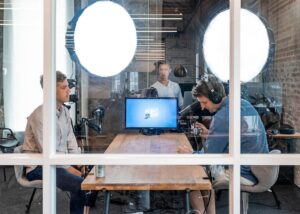The catalyst for building up this code of best practices emerged from a more extensive discussion around verse’s place in new media. During 2009, a gathering of writers, editors, distributers, and specialists in copyright law and new media met up under the protection of the Poetry Foundation’s Harriet Monroe Poetry
Institute with the objective of recognizing snags keeping verse from coming completely into new media and, where conceivable, envisioning how to eliminate or moderate these impediments.
The gathering’s work finished in a wide-running report, “Verse in New Media: A Users’ Guide” (http://www.poetryfoundation.org/establishment/verse and-new-media).
Accepting the overall estimation of admittance to verse as its subject, the gathering saw that business, innovative, and cultural movements had significant ramifications for artists distributing both in new and in customary media, and furthermore that artists have a chance to play a focal part in extending admittance to
an expansive scope of verse in coming months and years. Very quickly, the gathering’s discussion centered around hindrances to lovely advancement and dispersion brought about by leeway issues. A portion of these freedom issues create from the business structures fundamental verse distributing, however a critical number,
the gathering found, identify with institutional practices that may be rethought, including the two artists’ and distributers’ ways to deal with citing and different sorts of conceivable reasonable use. Not long after its first gathering, the gathering started talking about the chance of growing “accepted procedures” for writers and distributers.
As the Harriet Monroe working gathering got mindful of the vulnerabilities and pressures around reasonable use at play in the verse local area, its individuals understood that the verse local area earnestly expected to explain for itself what “best practices” may be for reasonable use in verse. As the gathering was completing the new media report, the HMPI reached Peter Jaszi and Patricia Aufderheide at American University,
who (through the Center for Social Media and the Program on Intellectual Property and Information Justice) have helped different gatherings in growing reasonable utilize best practices archives for their particular networks. Working with the two teachers and with Jennifer Urban at University of
California-Berkeley, the HMPI enhanced the generally broad data gathering accomplished for the new media report with an extra data gathering meeting in Boston in November of 2009. The Center for Social Media and the HMPI at that point held six extra little gathering gatherings, each with 10 to 20 members two at the 2009 MLA show in Philadelphia, two at the 2010 AWP show in Denver, and, in April 2010, two at the Poetry Foundation workplaces in Chicago.
Verse is in excess of a collection of compositions or a typology of structures; above all else, it is a developing arrangement of practices that draw in, and are locked in by, the innovative work of others. During the broad discussions paving the way to this archive, a couple of focal topics about idyllic practice arose. The previously was that writers by and large (however not all around) need their verse to be as broadly accessible to
likely crowds as could be expected, both during their lifetimes and past. Be that as it may, writers, particularly those not working in and for new media designs, communicated nervousness about what new media may mean for their capacity to bring in cash from their work and to set up and advance scholarly
vocations. Also, they were worried about the simplicity with which new media empower others to appropriate and change their sonnets without consent. Simultaneously, artists earnestly communicated their need to utilize material got from the sonnets of others (counting 20th and twenty-first century authors) in their own work, and their longing to do as such in manners that were both morally and lawfully fitting.
Verse, as an exceptionally insinuating work of art, essentially depends on the writer’s capacity to cite, to duplicate, and to “play” with others’ language, and verse researchers and analysts similarly depend on their capacity to cite the verse they are examining. Indeed, artists for the most part recognize that
basically all that they do in their workaday lives, from making their sonnets to expounding on verse to showing verse, expands on crafted by others. In the gathering discussions, artists conveyed an overall sense that their capacity to take care of their job with certainty was frequently hindered by institutional guidelines dependent
on extremely perplexed translations of copyright. They needed clear direction concerning what material may be accessible in the public area. Also, they were compelled by their own absence of conviction about what utilizations are a lot not reasonable inside the acts of verse. While they absolutely wish to fittingly control their own work,
and to bring in cash where cash is to be made, artists additionally communicated a solid wish to assert the significance of their capacity to make sensible unlicensed employments of copyrighted material and their help for such uses by others of their own works. In this, the artists both exemplified the strains inalienable in copyright law and the reasonable use convention and generously embraced the qualities undergirding reasonable use.
